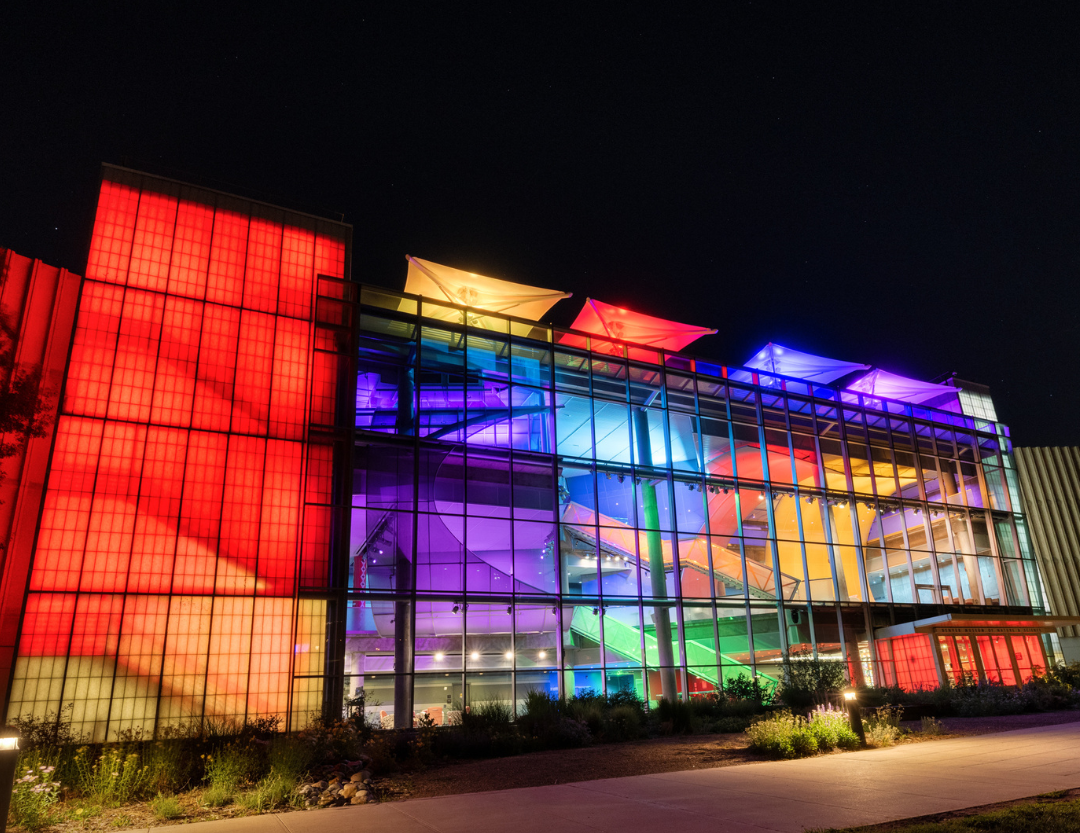NEW YORK — Scharff Weisberg provided video and audio support for the large-scale installation, Pour Your Body Out (7354 Cubic Meters), by Swiss artist Pipilotti Rist in The Donald B. and Catherine C. Marron Atrium at The Museum of Modern Art (MoMA). Klaus Biesenbach, the Museum’s Chief Curator of the Department of Media, organized the exhibition. MoMA commissioned Rist to reinvent the space and re-envision the architecture of the atrium for the temporary installation. The space has a volume measuring approximately 7,354 cubic meters, a number which figures in the artwork’s title. The resulting installation was an immersive environment shaped by images, sound, and sculptural elements.
In Pour Your Body Out, it’s Rist’s intention to reconcile viewers with the perception of their own bodies and the surrounding environment through the acceptance of the beautiful variety of forms that make up human beings and the world. The installation wrapped the atrium walls in a panorama of moving images, measuring 25 feet high and 200 feet across. A continuous flow of multiple HD projections filled the building’s center with light and color, transforming it into a pool of moving images.
Fantasy-inspired video content was shown in extreme slow motion as music created by Anders Guggisberg emanated from a sculptural seating element reminiscent of a human eye. Colorful curtains cascaded in tiers from the sixth floor to darken the atrium; the floor is covered by carpet of various textures and colors. Rist invited visitors to experience the installation by taking off their shoes, lying on the carpeted floor, or singing or dancing around freely.
After months of collaboration with MoMA and the artist’s studio, Scharff Weisberg designed and provided a six-node Watchout system under Medialon control to play out the media. Control and video signals were supported by a gigabit fiber optic network and DVI/fiber transmission system. The Christie projector complement included four HD18s and one each S+16, DS+8k and HD12k.
The projectors were concealed from view and mounted 25 feet above the floor in bubble-shaped enclosures conceived as sculptures by the artist and her studio, Atelier Rist Sisters. The “bubbles” protruded out from the walls not unlike blisters and, in one case, became part of the projection surface itself.
“Engineering the coordination of the physical and ventilation aspects required to mount the projectors was quite challenging due to the size and shape requirements of the bubbles as stipulated by the Studio,” said Scharff Weisberg’s Josh Weisberg. “Although we’ve worked on many high-profile art projects, this is the first time we’ve installed equipment inside the artwork itself.”
To create a contiguous image along the running length of walls, the images were edge-butted and edge-blended and multiple projector aspect ratios were used. “Watchout’s warp and blending capability made this relatively easy to execute,” Weisberg said. “Through some projector sleight of hand, the image actually wraps behind a large column located near one of the walls without creating a shadow — a trick that most visitors will probably not comprehend but which adds immensely to the look of the piece. This was challenging, but the Museum and the Studio supported us and, after a late night running CAD scenarios, I figured out how it could be done.”
Scharff Weisberg also designed and installed the multichannel speaker system in the eye-like sculptural seating element on which visitors lounged while immersing themselves in Pour Your Body Out.
At Scharff Weisberg, Walter Elzey was account executive for the installation; Joe Volpe project manager; Barry Grossman, Randy Briggs and Tim Clark engineers; and Juan Mateo projection technician. Chris Keitel of 3-Byte Intermedia handled the supplementary Watchout and Medialon programming.
For more information, please visit www.scharffweisberg.com.


